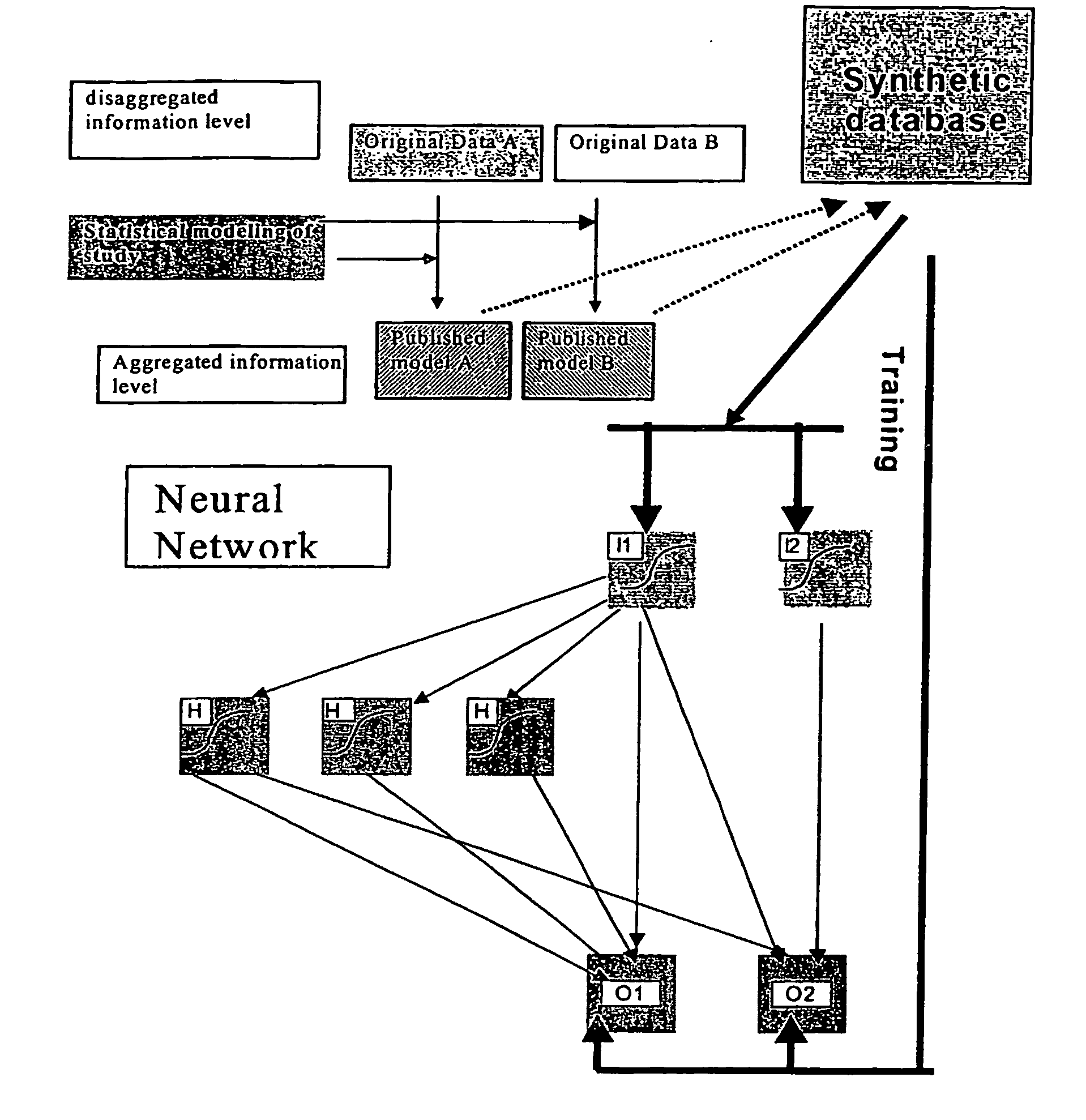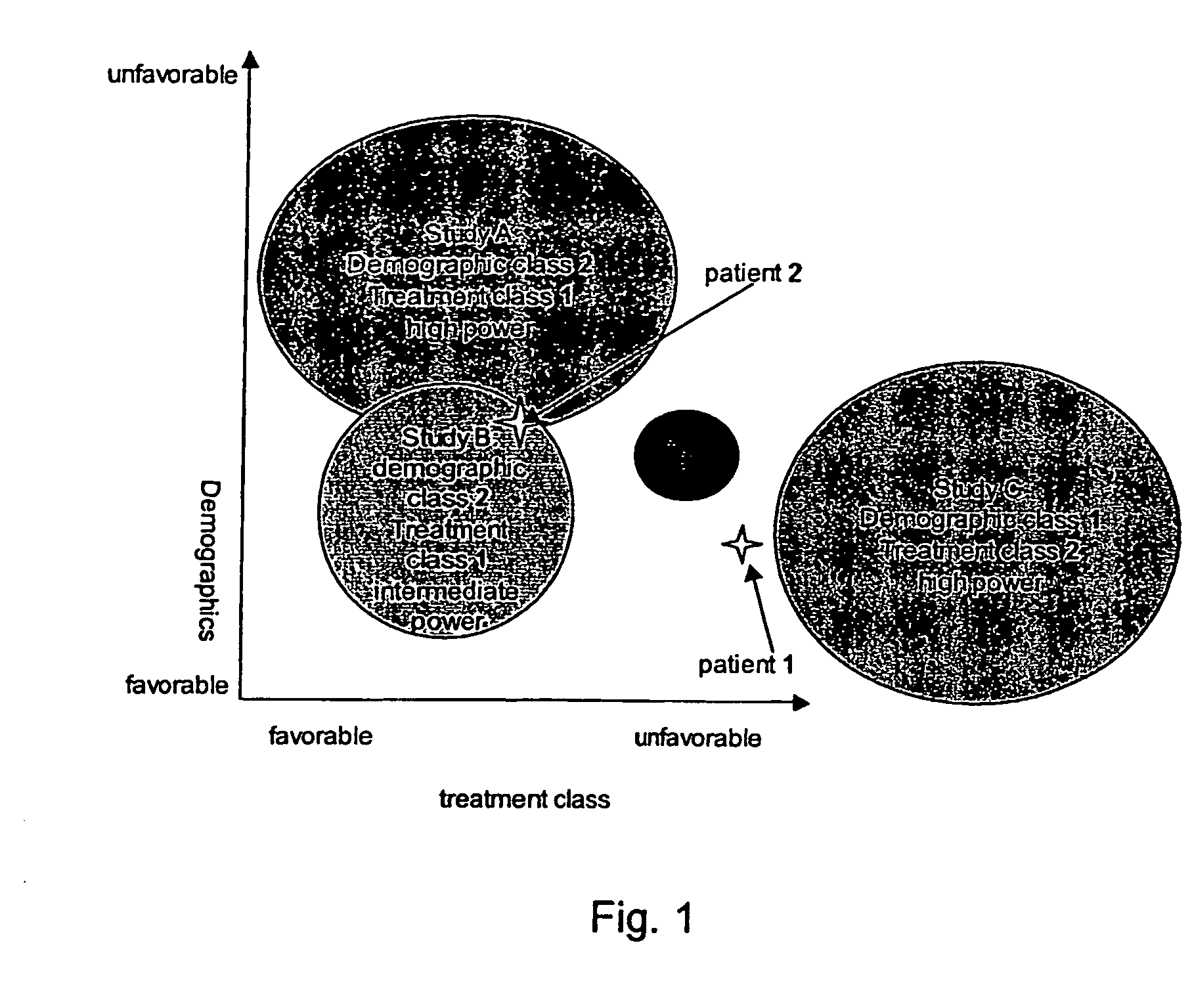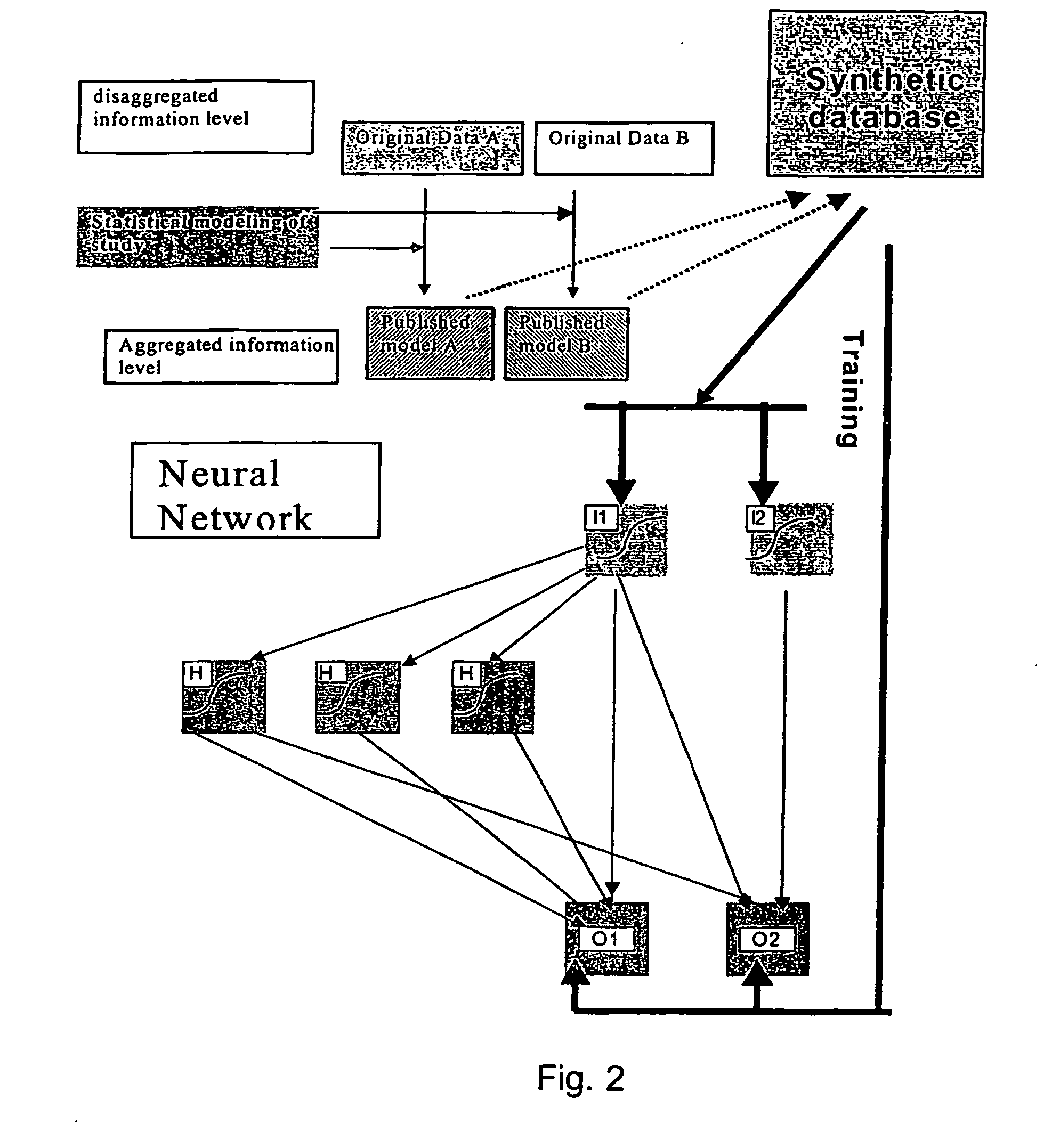In business, expensive measures to avoid cancellations can be targeted to those most susceptible to cancellation.
However, the data required to
train these tools is not always available in sufficient quantity and scope as
original data from carefully controlled, randomized experimental studies.
That is,
original data may be lacking, or such original data that is available may have certain deficiencies that could affect the training of a learning-capable system.
The evidence (“puzzle pieces”) also have non-
uniform quality (e.g., statistical power).
This kind of reduction does not necessarily represent the best way of utilizing the evidence for an individual patient.
Scientific studies in fields such as
medicine are expensive to perform, and the expense is closely related to the number of subjects required to achieve the required statistical power, which in turn is related to the size of the influence to be measured.
In a clinical setting, for example, current standards or practice may render it unethical to include an “untreated” control group in a new study measuring performance of a treatment, although such
untreated control groups were considered ethical at a previous stage of
medical knowledge.
Even if
individual data is available relating
subject characteristics to outcomes, the data may not be ideal for a learning-capable system trained according to the state of the art to achieve the desired generalization performance.
For many of the problems mentioned above, insufficient evidence from carefully conducted, randomized trials is available for training a learning-capable system, but there may be considerable retrospective or observational evidence (defined as data recorded from the observation of systems as they operate in normal practice).
For example, in
breast cancer, patients with many affected
lymph nodes have usually been those most likely to receive
chemotherapy, and hence a univariate comparison of relapse-free survival between patients receiving and not receiving
chemotherapy would often find that
chemotherapy is associated with poorer survival, the reason being in this case that
selection bias is stronger than the benefit of therapy.
Even “randomized” clinical studies often face the problem that subjects do not always adhere to protocols, e.g., some patients randomized to the control group will choose therapy and vice versa.
Hence, a simple comparison of “treated” and “untreated” groups is not necessarily free of
selection bias even in “randomized” clinical studies.
Intention-to-treat analysis is randomized by definition, but it suffers from the deficiency that the true effects of treatment could be diluted by admixtures of the untreated subjects among the group that was intended to be treated and vice versa.
Even in
medicine, ethical requirements often
restrict the range of permissible options for control groups.
These methods of the current art generally provide a measure of the average effectiveness within a group of subjects, but they are limited in that they are not designed to provide an individualized estimate of
therapy efficacy, i.e., an estimate that depends systematically on the explanatory characteristics of an individual subject.
Moreover, the methods available up to now do not address the need to model complex impacts of explanatory factors and treatments on outcomes, including interactions of explanatory factors among themselves and with treatments (in clinical practice the latter interactions include “predictive impacts” of factors).
This is an inherently nonlinear and possibly complex problem for which learning-capable systems would seem to offer an appropriate approach.
Unfortunately, when observational data are used to
train such a system according to the state of the art, the treatment policy in the
training set can affect the relationship between explanatory factors and outcomes so as to reduce the generalizability in the sense defined above.
This deficiency of the state of the art applies to any relationship between treatment probability and explanatory factors, even if such a policy or strategy is not explicitly stated, but for example is merely observed as a correlation after the fact.
Hence, the deficiency of the state of the art could affect training on any data that includes treatments that were not randomized, and thus it is potentially quite severe.
However, available data sets—from retrospective studies or even from prospective clinical trials conducted at high expense—are often incomplete in the explanatory variables.
This problem may in particular arise in the aforementioned “disaggregation” of evidence, since a study “A” may fail to test a factor “X” known to play a role in other sources of evidence.
It is unsatisfactory simply to
restrict the use of learning capable systems to those sources of evidence or those data sets that are complete in the explanatory variables.
This restriction would constitute a very severe limitation on the use of learning capable systems, since data are often the most costly resource, and there may not be enough or even any
complete data sets available for analysis.
The procedure of simply ignoring (deleting from the data set) all explanatory factors for which there are incomplete data in some patients in order to render an incomplete data set complete is likewise unsatisfactory if the deleted factors have an important effect on outcome.
The simple and often-used procedure of “listwise deletion” (deleting all subjects with even one missing value of an explanatory factor) is in general unsatisfactory for the purpose of training a learning-capable system, for several reasons: At best, a percentage of subjects and thus potential power is lost.
This loss can be very serious even at modest
missing data rates.
In the statistical context, listwise deletion is known to introduce bias, unless certain assumptions about the pattern of missingness are satisfied, these assumptions often being difficult or impossible to prove.
There is no evidence that listwise deletion is any better for learning-capable systems.
Such a procedure is known as “imputation.” Unfortunately, simple imputation methods such as substituting the univariate mean of said factor for the missing value (referred to in what follows as “mean imputation”) or other univariate procedures are known from the statistical context to be unsatisfactory, because they may lead to a statistical bias, especially if missingness is correlated with factors which themselves are explanatory.
There is no proof or evidence that similar problems would not occur if mean imputation is used in training a learning-capable system.
Imputation algorithms known as “expectation maximization (EM)” offer a potential improvement, but it is known in the statistical context that the use of data imputed by EM to estimate a statistical outcome model fails to estimate the variance properly.
Hence, the use of even a relatively advanced imputation method such as EM to pre-process the data used to
train a learning-capable system lacks any mechanism for providing an indication of that part of the uncertainty of outcome
estimation associated with uncertainty in the imputed values.
This lack constitutes a grave deficiency of the current state of the art of training of learning-capable systems.
This deficiency of the current state of the art could have severe consequences, for example if the learning-capable system is intended for application in a decision support framework.
The reason is that an underestimate of the uncertainty of an
outcome prediction could lead to an underestimate of the risk of unusual outcome events (e.g., early relapse in
breast cancer).
It also relates to the problem of detecting implausible data entries in an on-line system for
data acquisition.
At present, there is no satisfactory objective methodology meeting the above described needs and requirements.
 Login to View More
Login to View More  Login to View More
Login to View More 


